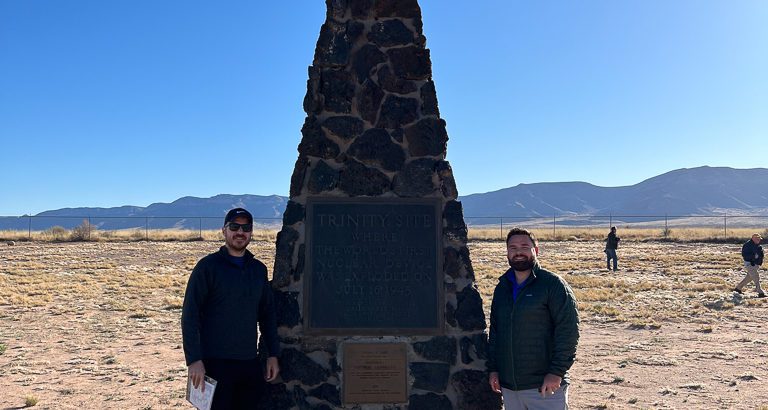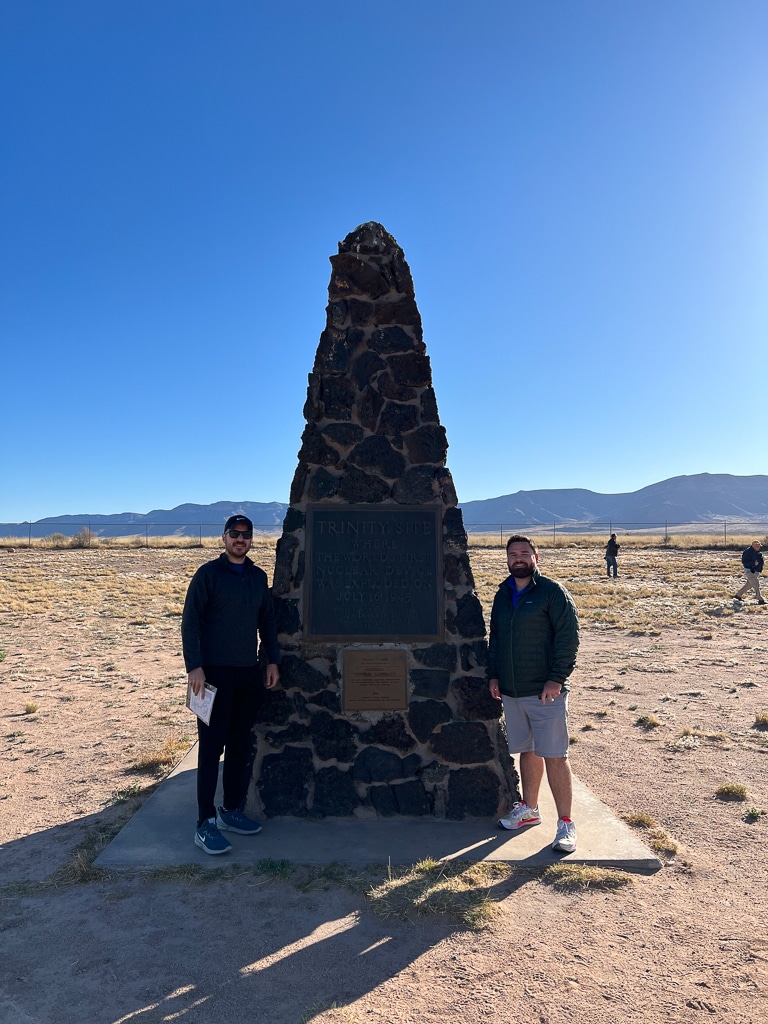The movie “Oppenheimer” is poised to create a new wave of interest in the atomic era, delving into the captivating narrative surrounding the development of the atomic bomb and its transformative impact on the world.
Exploring this topic is particularly fascinating, considering the profound changes that unfolded as a result of these historic events.
Luckily, you have the opportunity to personally visit several authentic historical sites related to the atomic era’s emergence, some of which were featured in the “Oppenheimer” movie.
In the past few years, we have had the privilege of exploring these sites firsthand, and it remains one of the most immersive and informative ways to delve into the rich history and intricacies of this remarkable era.
Table of Contents
Robert Oppenheimer’s House and Bathtub Row (Los Alamos, NM)
Los Alamos, the headquarters of the Manhattan Project, continues to preserve several buildings from that historic era. Some of these structures were featured in the Oppenheimer film, although a custom set was also constructed in the Ghost Ranch, New Mexico area.
Notably, Robert Oppenheimer’s house stands out as a key location used in the movie, adding an authentic touch to the portrayal of his character and the events surrounding the project.
As he was head of the operations, it’s no surprise that Robert Oppenheimer had one of the nicest houses in the area. Built in 1929, the house is nearly 100 years old and it’s said that it’s going to be undergoing renovations soon.
It was within this residence that Oppenheimer, his wife Kitty, daughter Toni, and son Peter lived from 1943 to 1945. But it wasn’t a very low-key existence. It’s reported that Oppenheimer was quite the party thrower and that many of the parties took place in this house. It was truly a work hard, play hard situation.
Related: 16 Things to Do in Los Alamos (+ Tips For Your Visit)
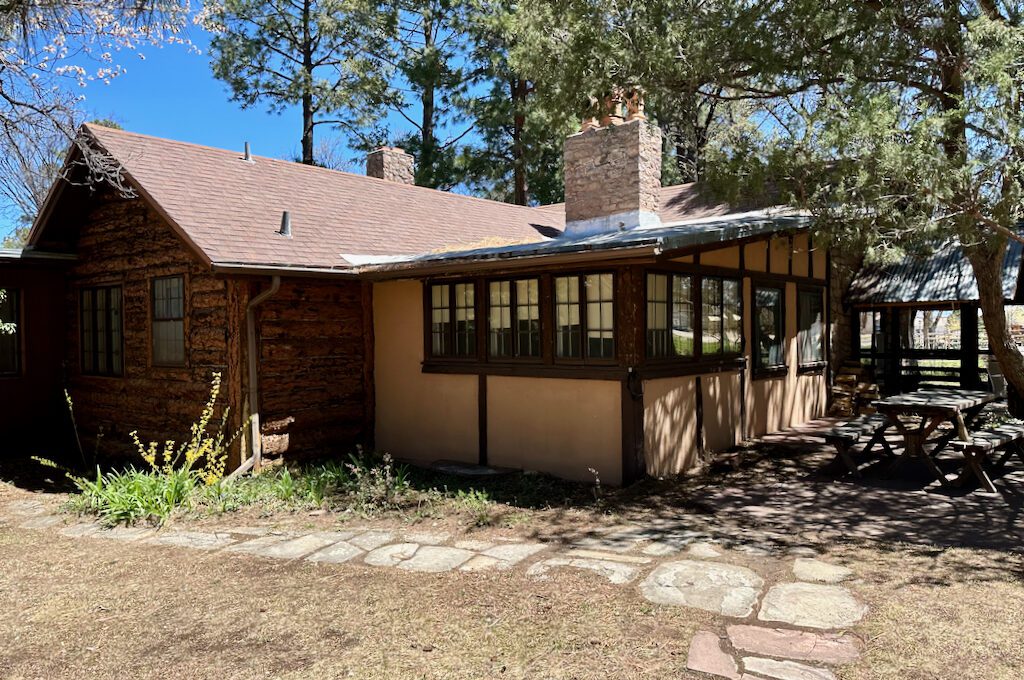
Just down the street from the Oppenheimer house is “Bathtub Row” which is is an actual street name with historic homes that were originally built for the Los Alamos Ranch School and then adapted during the Manhattan project to be used by scientists.
Back during the WWII days, these homes were the only ones with bathtubs which is how the street got its name! And as you would expect, this is where some of the top scientists lived while many of the workers lived in much different living quarters such as dormitories.
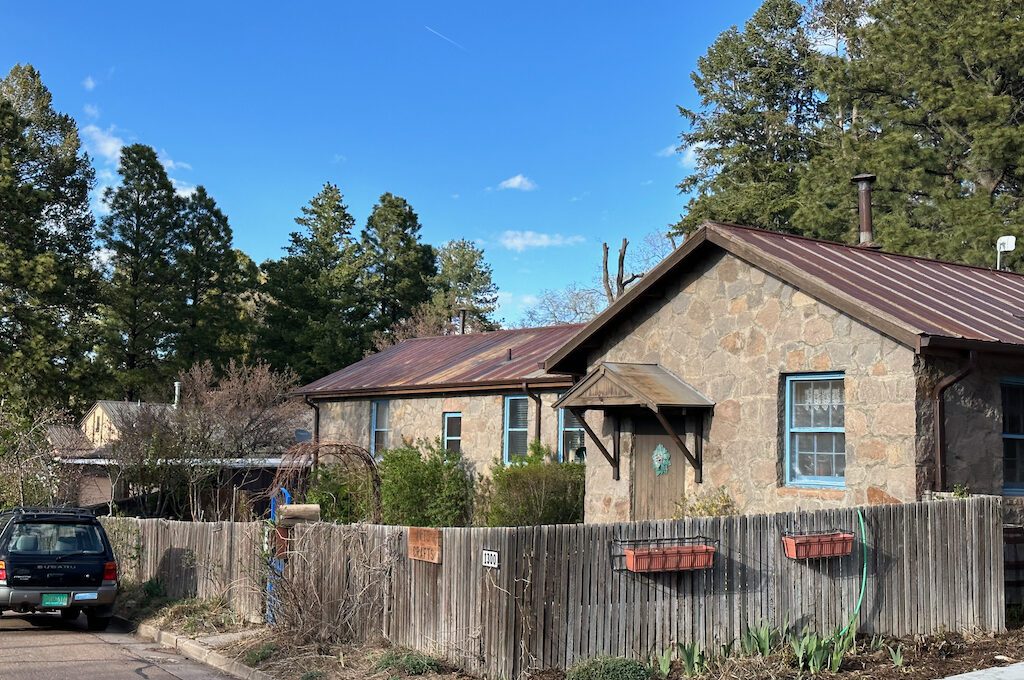
Bradbury Science Museum (Los Alamos, NM)
The Bradbury Science Museum has over 60 interactive exhibits and showcases the history and achievements of the Los Alamos National Laboratory, which played a pivotal role in the Manhattan Project, the top-secret research and development program that led to the creation of the atomic bomb.
There’s also a lot to connect you to the Oppenheimer movie.
Your visit to the Bradbury Science Museum can commence with an immersive 15-minute film that delves into the captivating history of the Manhattan Project. This film serves as an excellent introduction, providing a comprehensive overview of the project’s origins, scientific breakthroughs, and its impact on the world.
Following the film, you can explore the range of atomic era exhibits and the intriguing trinitite display.
Trinitite, also known as Alamogordo glass or atomic rock, is a unique glass-like material formed from the intense heat generated by the explosion of the first atomic bomb.
These rock fragments, once ordinary desert sand, embody the fusion of human ingenuity and destructive force, truly encapsulating the complex legacy of the Manhattan Project.
Finally, be sure to check out Oppenheimer’s chair.
As you stand before Oppenheimer’s chair, you can’t help but ponder the weight of responsibility that rested upon him and the countless decisions that were deliberated upon from that very seat. Imagining the intensity of the discussions, the ethical considerations, and the complex calculations that occurred evokes a sense of awe and fascination.
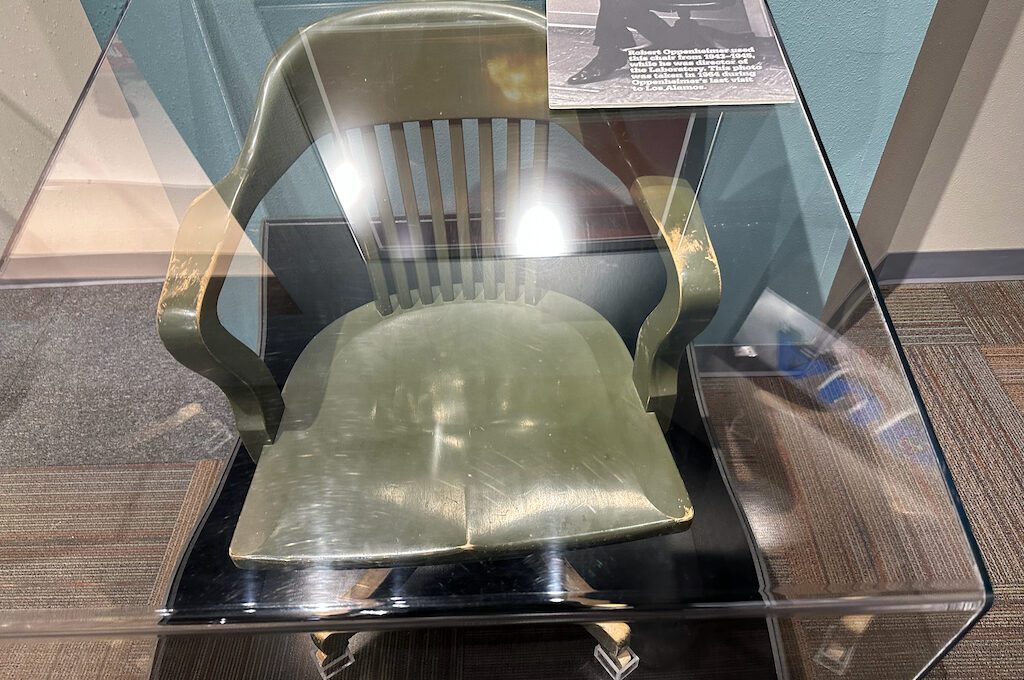
Los Alamos Historical Museum (Los Alamos, NM)
A notable addition to your museum itinerary is the Los Alamos Historical Museum. Constructed in 1918, this building holds a significant place in history as the oldest continuously occupied structure in Los Alamos.
The museum itself offers a unique glimpse into the past, providing a comprehensive exploration of the region’s history, including its pivotal role in the Manhattan Project. As you explore the exhibits, you will discover the remarkable connection this building holds to the development of the atomic bomb.
During the Manhattan Project, this very building served as the preferred lodging for General Leslie Groves, a key figure in the project’s management and coordination. General Groves worked closely with J. Robert Oppenheimer, the scientific director, in overseeing the construction of the first atomic bomb.
Related: Los Alamos, NM: Where to Stay (Tips and Recommendations)
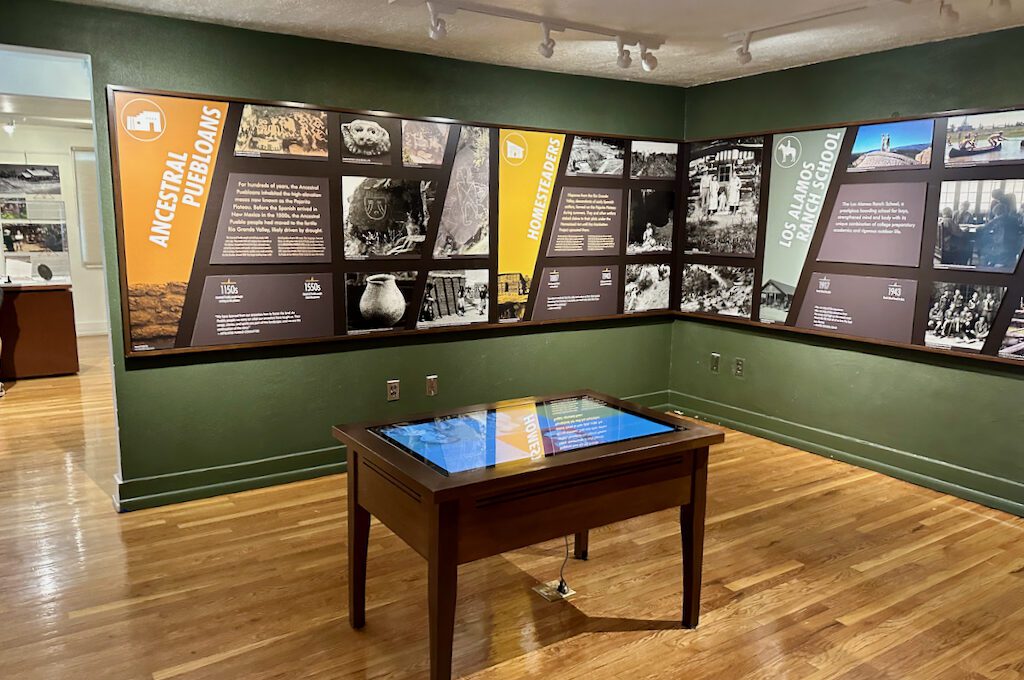
Ashley Pond Park and the Ice House Memorial (Los Alamos, NM)
Ashley Pond Park stands as a prominent highlight within the city of Los Alamos. In the era of Project Y, the pond was surrounded by laboratories but these were dismantled by the mid-1960s.
Presently, this serene location serves as a public park and a vibrant community gathering spot, hosting various events. But it’s the Ice House Memorial that you want to check out when on your Oppenheimer tour.
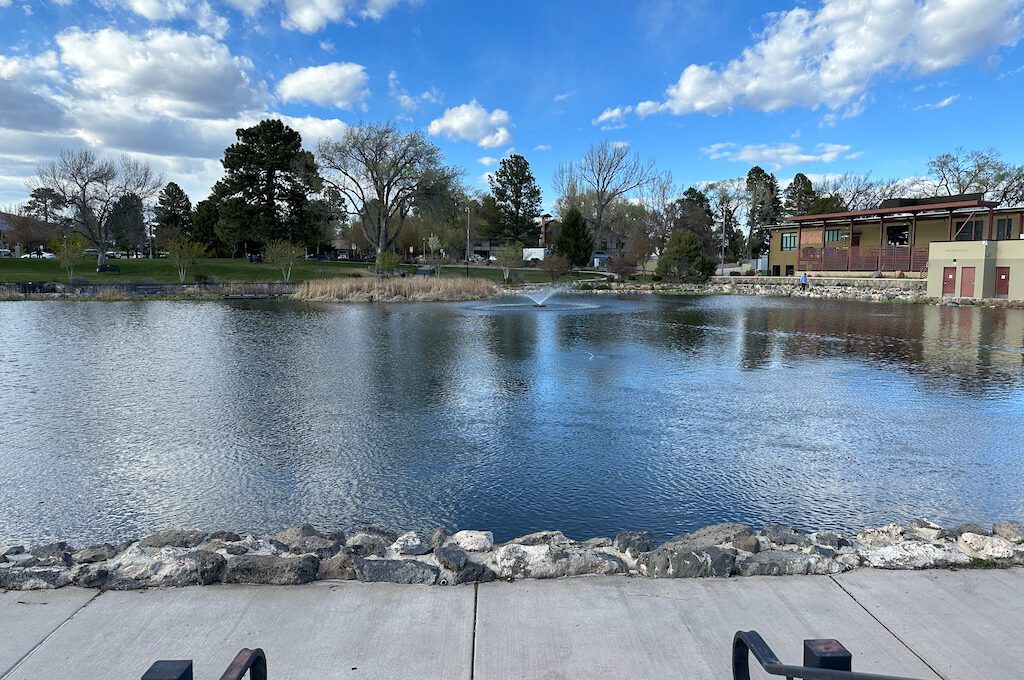
The Ice House Memorial sits on the site of the old Ranch School Ice House where the students once stored blocks of ice cut from Ashley Pond during the freeing winters.
During Project Y, scientists used the icehouse to assemble the nuclear core of “Gadget,” the prototype atomic bomb that was later transported to the Trinity Site.
The Ice House Memorial contains original stone from the Ranch School Ice House and it’s a must stop especially if you plan on making your way to the Trinity Site at some point.
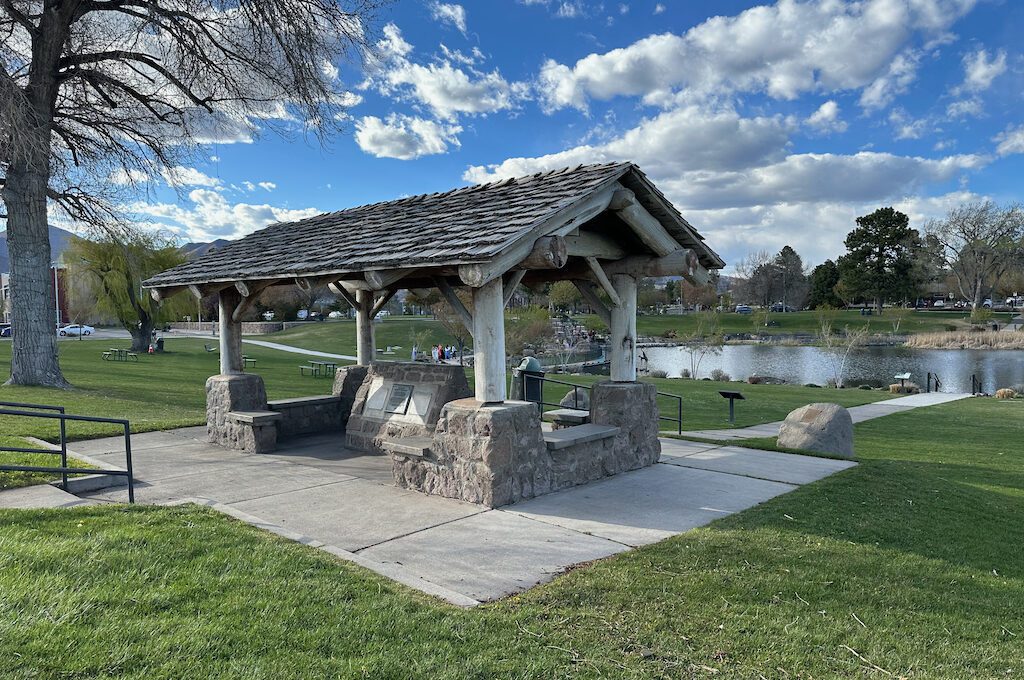
Main Gate Park (Los Alamos, NM)
All of the workers during the Manhattan Project had to pass through a main security gate to access Los Alamos and there is a re-creation of the gate just outside of the main area of town. An additional replicate of the gate was also featured in the movie as seen in the custom set built in Ghost Ranch.
If you’re leaving town, the re-created gate is found just past the airport near a landscaping store — you should easily see signs for it.
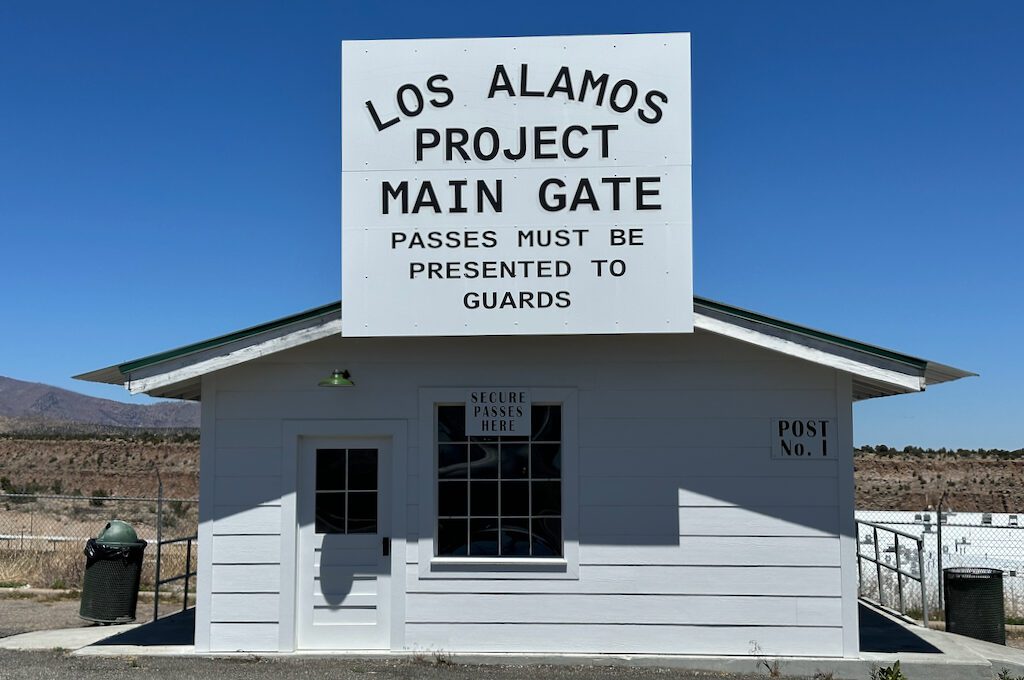
Fuller Lodge (Los Alamos, NM)
Originally built in 1928 as the dining hall for the Los Alamos Ranch School, the Fuller Lodge is a magnificent historic building crafted using 771 pine logs that were personally selected by architect John Gaw Meem and Ranch School director A.J. Connell.
Today, the Fuller Lodge has been transformed into a vibrant cultural center that offers a versatile space for social gatherings, meetings, and housing various offices, including the Fuller Lodge Art Center and the Los Alamos Arts Council.
The interior of the building was used for scenes in the movie, such as the Christmas party and one of the most haunting scenes of the movie. The fireplace in the middle is easily recognizable.
As long as no events are taking place when you’re visiting, you can check out its cozy interior, which is quite beautiful.
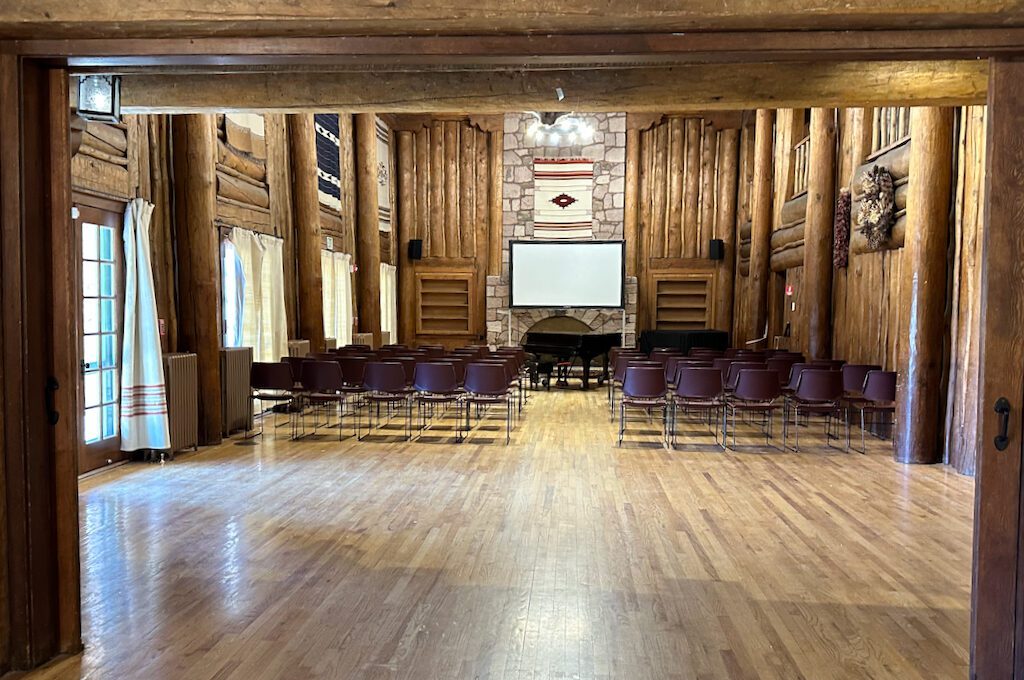
Groves and Oppenheimer statues (Los Alamos, NM)
And before you leave Los Alamos, make sure you check out the Groves and Oppenheimer statues, which pay homage to the enduring legacy of two pivotal figures in the history of Los Alamos and the development of the atomic bomb.
These statues symbolize the intricate relationship between Groves and Oppenheimer, representing their collaboration and shared responsibility in shaping the course of modern history.
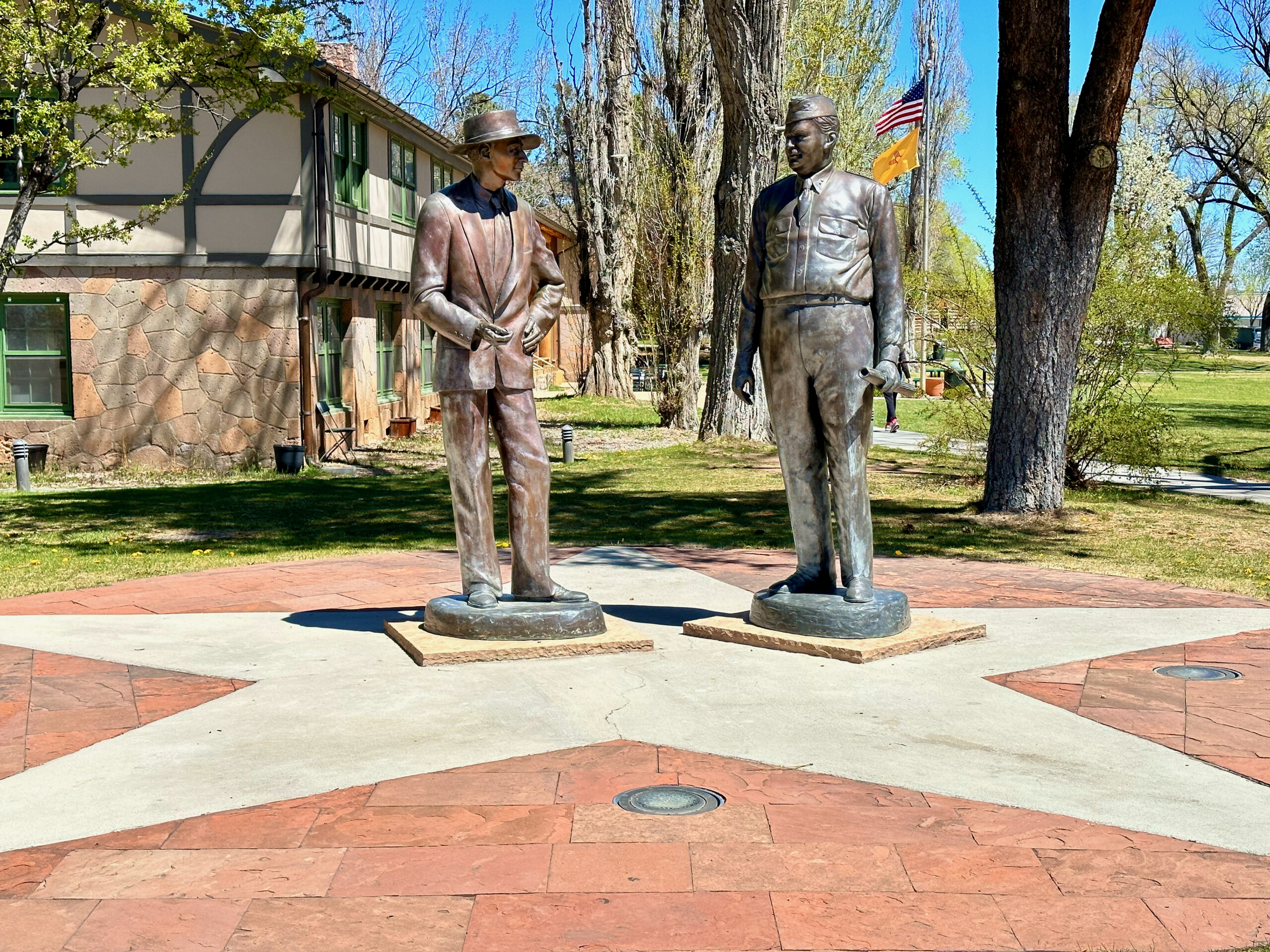
The next few sites are all found at the Trinity Site in New Mexico.
The Trinity Site is a tricky place to visit because it is only open two days out of the year during their open house. You’ll want to get familiar with how they operate the open house and I have a full guide to help you out with that.
Seeing all of the buildings in Los Alamos is really fascinating, especially because as mentioned many were featured in the movie.
However, there’s something extra special about making it to the Trinity Site. It’s not just about its exclusivity; there’s a distinctive aura that envelops the site, something that can only be truly felt and appreciated through firsthand experience.
Ground Zero (Trinity Site, NM)
Perhaps the most crucial site to see related to the Oppenheimer story is Ground Zero: the exact spot where the first atomic bomb exploded.
Once you arrive, you’ll see a monument towering in the middle. Erected in 1965, The Trinity Monument is a lava-rock obelisk about 12 feet (3.7 m) high that marks the explosion’s hypocenter.
It’s a bit of an eerie feeling standing directly where the explosion occurred and you can’t help but to think about how much the world changed at this exact location on July 16, 1945.
Right next to the obelisk, you can find the remains of the 100 foot steel tower that hoisted Gadget, which was obliterated during the explosion.
Carefully inspect the radioactive grounds in the entire Ground Zero area and you’ll surely find bits of trinitite still there from the initial explosion over 70 years ago. There are also different artifacts and photographs you can check out surrounding the area that will give you more context to the events.
McDonald Ranch House (Trinity Site, NM)
The McDonald Ranch House, a property with a rich history, played a pivotal role in the assembly of the atomic bomb on July 13, 1945.
Originally constructed in 1913 by Franz Schmidt, a German immigrant, the ranch later came under the ownership of the McDonald family in the 1930s. However, with the outbreak of World War II, the government assumed control of the property in 1942 for its strategic importance.
When visiting the McDonald Ranch House, one can only begin to fathom the intensity, focus, and nervous energy that permeated the atmosphere during that crucial period in July 1945.
Standing in the assembly room, you are transported back in time, imagining the meticulous final modifications and adjustments being made to the atomic bomb by the dedicated individuals working within those walls.
It’s also incredibly moving to see the nails still placed along the windows which were used to shield the building from the explosion. Something about those little details just takes you right back to the 1940s.
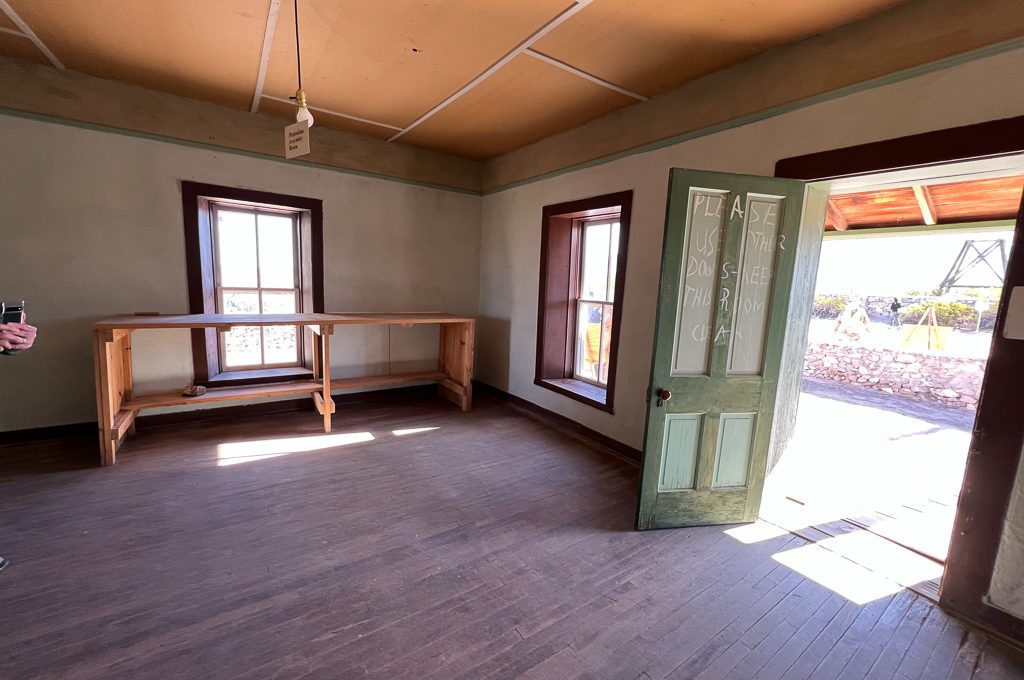
LeConte Hall (UC Berkeley, CA)
Oppenheimer taught at UC Berkeley from 1929 to 1943 and during this time his office was on the third floor of LeConte Hall (now called generic a Physics Building), a 1924 building designed by John Galen Howard and known for being the site of the first atom collider.
This building is located right by the beautiful Campanile Esplanade (Sather clocktower) which is where some shots of Oppenheimer were filmed.
The crew filmed here for a couple of days and brought in an assortment of potted plants and trees, which were strategically placed to conceal modern elements like bike racks and disabled parking signs. To cover large trash and recycling bins that could not be moved, wooden sheds were placed over them.
While you may not be able to enter all of the buildings’ corridors and rooms, the Berkeley campus is just a beautiful campus to explore although I might be a little bit biased since I spent a few years there.
Lawrence Berkeley National Laboratory (UC Berkeley, CA)
Oppenheimer and General Leslie Groves first met at the Lawrence Berkeley National Laboratory in late 1942 as Groves was organizing the Manhattan Project.
The laboratory was a major contributor to the war efforts and is known for its contributions to three valuable technology developments (the atomic bomb, proximity fuze, and radar).
There are several buildings in the laboratory area and obviously there is going to be security issues given the nature of the facilities but there are some tours available.
And again, this is just another beautiful area of the campus to check out and you can make your way up to the Lawrence Hall of Science to give yourself a sweeping view of the laboratory facilities below.

Institute for Advanced Study (Princeton University, NJ)
Both Albert Einstein and Robert Oppenheimer worked in the same building found out the Institute for Advanced Study at Princeton University. It was near here where Robert Oppenheimer and his wife lived in the director’s house and Oppenheimer served as director from 1947 to 1966.
Some of the filming took place in Albert Einstein’s former office in this building and the building’s exterior is also featured in the movie several times. In addition, the infamous meet up scene with Oppenheimer and Einstein takes place by the Institute Pond.
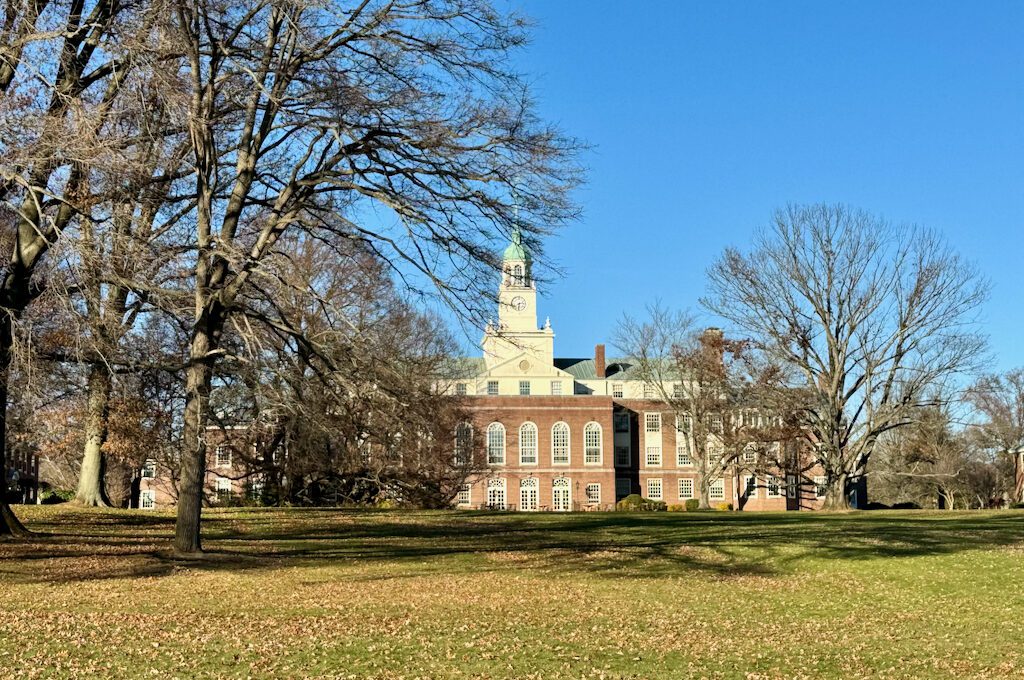
USS Missouri (Pearl Harbor, HI)
The narrative sparked from the first atomic bomb remains ongoing, as its successful creation marked a profound turning point that unleashed a realm of unsettling possibilities, still present in our world today.
But if you wanted to choose an important milestone connected to the “end” of the first atomic bomb’s story, you can do so in Pearl Harbor.
The attack on Pearl Harbor on December 7, 1941, served as a catalyst, propelling the United States into World War II and instigating a series of events that led to the development and eventual use of the atomic bomb.
And today, at Pearl Harbor, you can visit Surrender Deck located on the USS Missouri where all of these war efforts (including plans to deploy additional nuclear bombs) officially came to an end on September 2, 1945.
Standing on the spot where the Empire of Japan surrendered unconditionally, just one week following the devastating atomic bombings, holds profound historical significance.
It serves as a poignant endpoint, offering a sense of closure and culmination to the events surrounding the United States’ involvement in World War II and the advent of the atomic bomb.
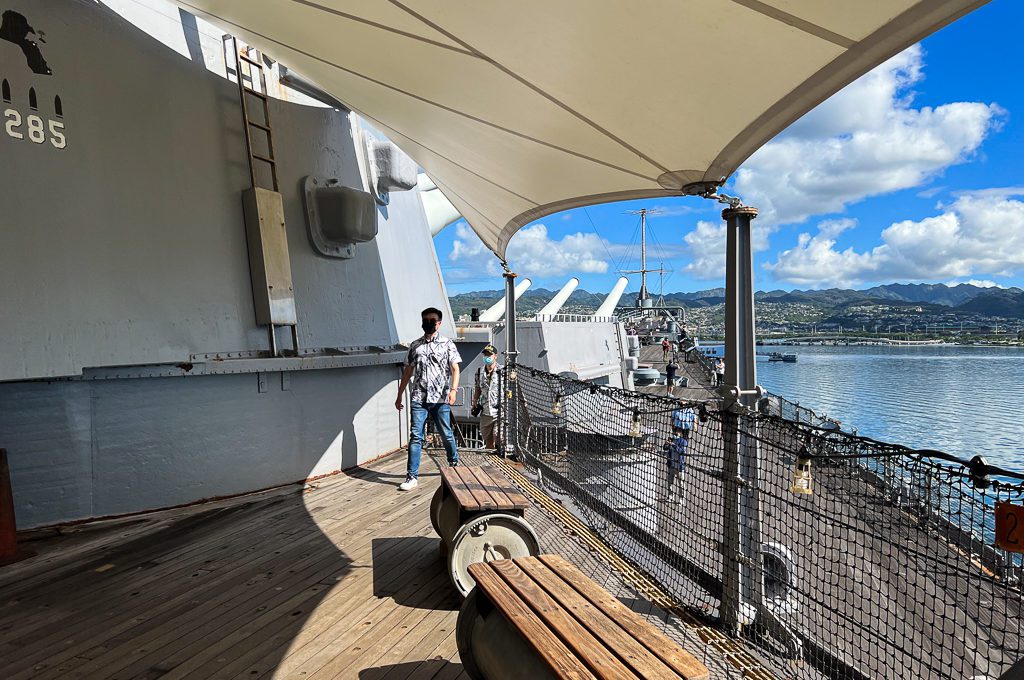
Final Word
The Christopher Nolan film “Oppenheimer” is likely to ignite a renewed interest in delving deep into the complex history of the atomic era.
While books, documentaries, and other educational resources offer valuable insights, nothing quite compares to tracing the footsteps of history by visiting the actual sites where these significant events occurred.
Embarking on a journey to some of these historic locations requires careful planning, but the experience offers a profound connection to the events and people who shaped the atomic era.
Visiting these sites allows one to walk in the footsteps of the scientists, leaders, and ordinary individuals who contributed to the development and deployment of atomic weapons.
By standing in the places where pivotal decisions were made and experiencing the surroundings firsthand, a deep understanding of the complexities, moral dilemmas, and far-reaching implications of the atomic era can be gained.
It will surely be something you never forget.
Daniel Gillaspia is the Founder of UponArriving.com and the credit card app, WalletFlo. He is a former attorney turned travel expert covering destinations along with TSA, airline, and hotel policies. Since 2014, his content has been featured in publications such as National Geographic, Smithsonian Magazine, and CNBC. Read my bio.

